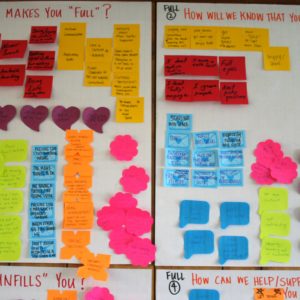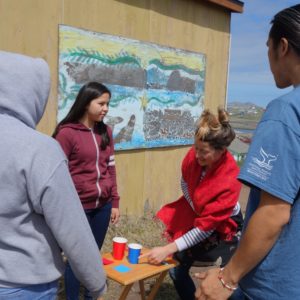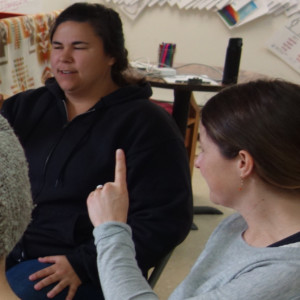Before I arrived at the St. Paul Unangam Tunuu Summer Language Intensive, I wondered what we would do on a typical day. I knew that there would be no teacher standing at the front of the room, no textbooks. How would we fill our time from nine to five? I discovered here a variety of activities that develop language fluency as well as learning and teaching skills.
Below are five examples of the activities that fill up a good chunk of our schedule: rides, swaps, singing, hunts, and beverage talks. All the activities are done in immersion, typically in groups of three to six people. Singing is the one exception, which we do as a whole group of about 20 people. In this post, I hope to give an overview of some of the activities involved in a WAYK language intensive, and prompt some thoughts about immersion activities that can be done with groups.
1. Rides
Rides are 15-45 minute lessons in which the learners have an experience with a new piece of language (e.g. What’s that? / This vs. there), and ideally have some fun as well. Typically, one person will lead, teaching the ride to new learners, with the support of others who have done the ride before. The use of props, physical action, and hand signs helps learners follow without translation. I appreciate several elements of rides: the dual focus on goals of learners learning and leaders improving their skills, the practice of reflecting afterwards on what went well and what we would change, and the commitment the group makes to staying in immersion.
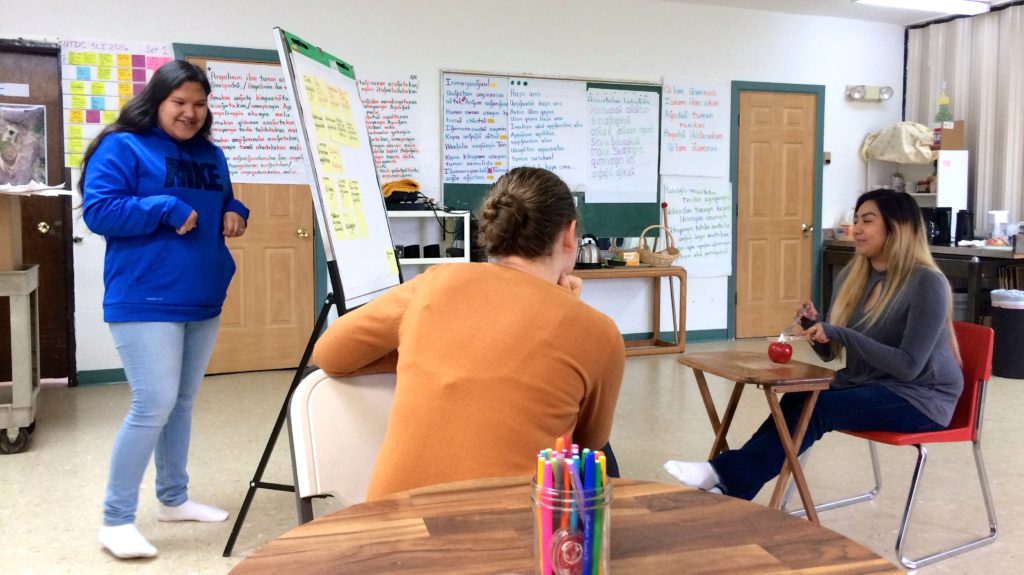
Linnae and Janette leading me and Erin on a very action-oriented ride.
2. Swaps
We regularly swap language among ourselves. People on the home team, who have been working on improving their Unangam Tunuu for a couple of years, sit in one group. People on the visiting team, who are only a month into the language, sit in another group. Within each group, people pass around notebooks and compare pieces of language that they have learned from hunts. When we identify grammar that several people want to learn, the people who have a grasp on that particular language will teach it to the group. They do this by setting up the scene with props or actions, introducing the language, and passing it around the circle. This way, we avoid constantly searching for the same things from native speakers or more fluent speakers; we share what we know.
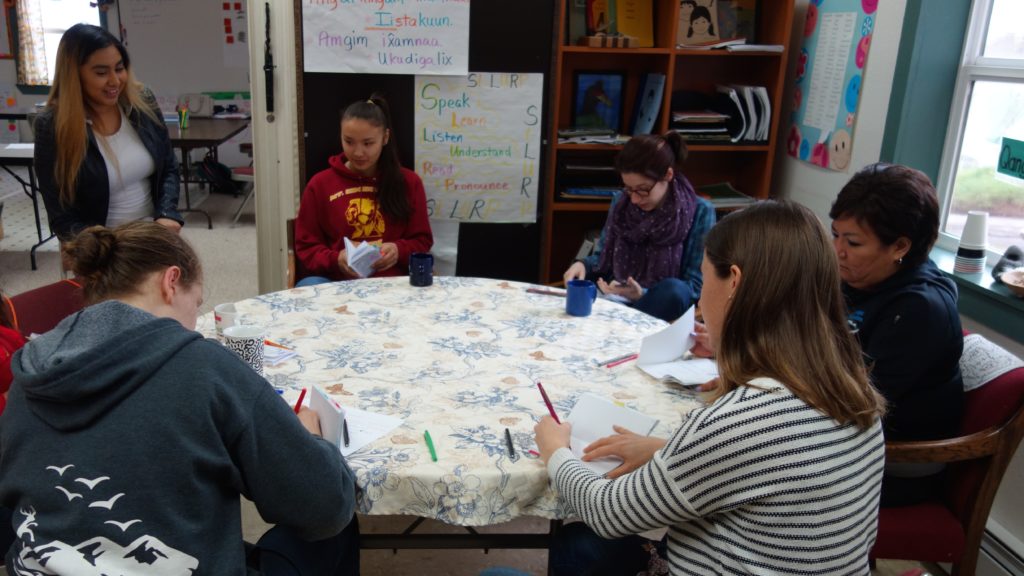
The “Newbies” updating our hunting books before passing them around – a useful activity before deciding which language to swap.
3. Singing
We sing every day, either in the morning or afternoon, standing in a circle and reading from big poster papers on the wall. Sometimes George or Marjorie will drum. Singing gives us a chance to read, practice pronunciation, and get the language stuck in our heads in a fun way. I like that instead of translating the songs, we accept that we will understand some meaning from gestures, and that as we learn more and more language, the meaning of songs will also become more clear.
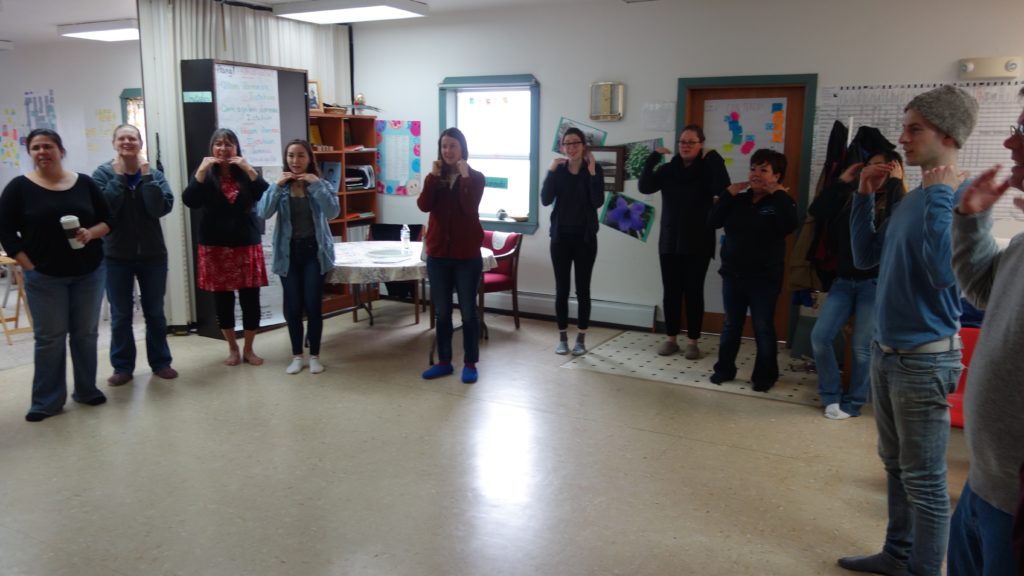
The whole group singing a song with accompanying gestures.
4. Hunt
Hunting is an essential activity in Where Are Your Keys, the purpose of which is to get comfortable eliciting and learning new language from fluent speakers or from people who are more fluent than you while in immersion. Again, we use props, actions, and scenarios to make our meaning clear and to check that we understand. One of the major differences between this and other kinds of language activities is that it is learner-led; the learners, or “hunters,” consider in advance what they want to learn, figure out how to elicit it, and then see where their exploration goes. After, they reflect and plan their next hunt to test their knowledge and seek something new.

Erin and Aquilina during a hunt.
5. Beverage talk
A beverage talk might be about making coffee, tea, or cocoa (depending somewhat on your community’s beverage preference). The talk is a series of commands or questions and answers – e.g. “Open the box.” “I’m opening the box.” – which you do while actually making coffee, tea, or cocoa. The purpose, as I understand, is to lay a foundation of conversation that you can use later to explore more challenging language. When I recently did a cocoa talk for the second time, I was amazed by how much more language I could recognize and understand. Often I could look up from the page of scripted dialogue, knowing what to say next.
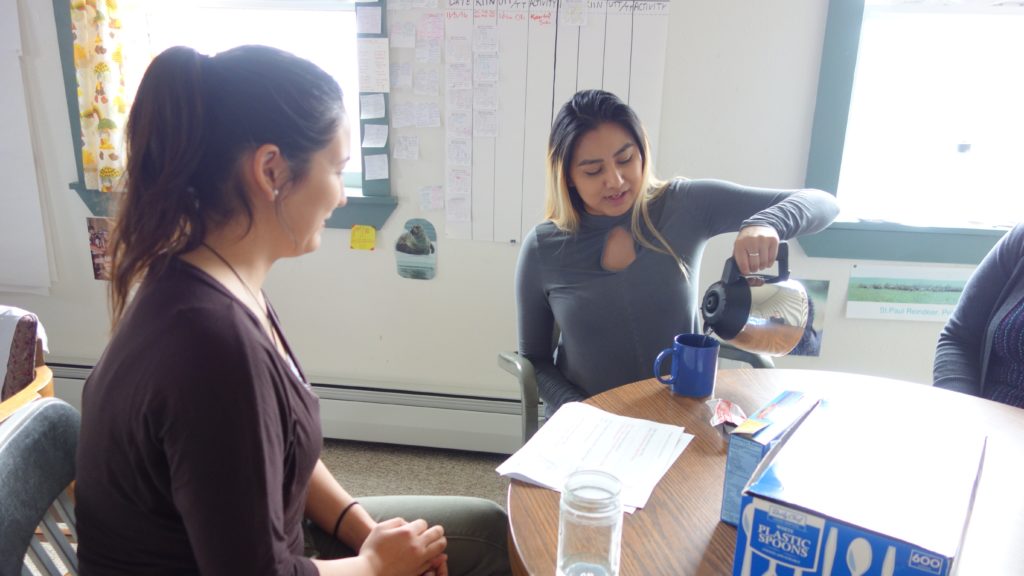
Anna and Janette modeling a cocoa talk.
I hope this overview gives you an idea of how we fill our days in the summer language intensive and gives you ideas for immersion activities to run in your own context. With limited time, you might choose just one or two activities for a session. With full days, it’s nice to have a blend. For more illustration of what these activities can look like, check out A Day In The Life.
Post authored by Mary.

